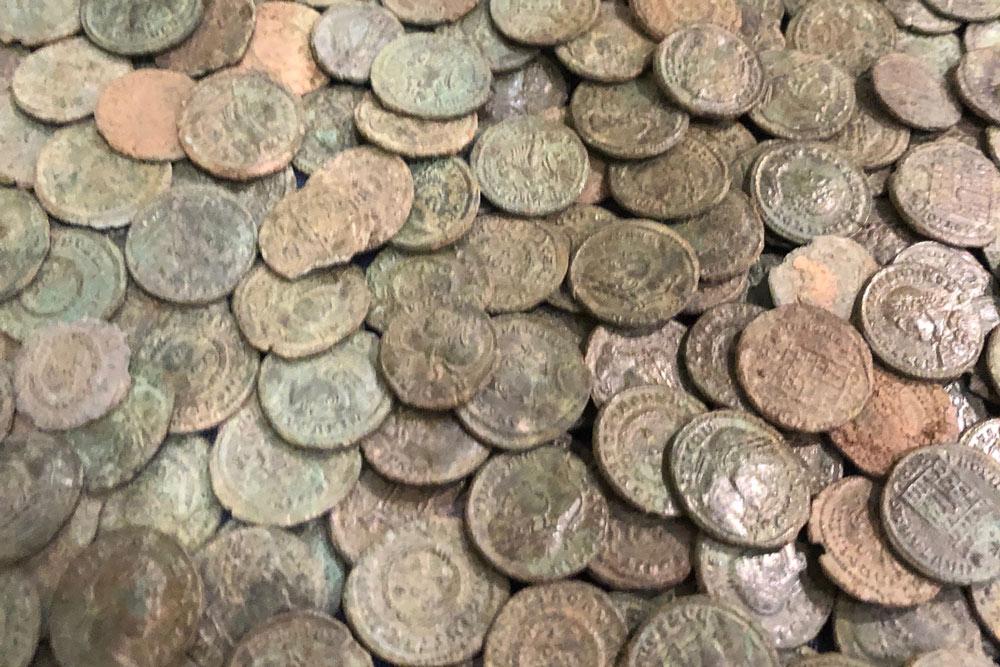
The Poole Hoard
The Poole Hoard is a group of more than 1500 low value ‘nummus’ coins buried around the time of the reign of Emperor Constantine the Great (AD 306 to 337). It was found in 2016 with the aid of a metal-detectorist. They were found with fragments of Roman grey ware pottery believed to be parts of the vessel which once contained them.
The hoard was recorded by the Portable Antiquities Scheme.
Coins
The nummi coins in the hoard range in date from the fourth century AD 313-335 while five radiates are from the third century AD 269-74. They are made of copper-alloy with a small mixture of silver.
Present are two coins issued by Constans, the youngest of Constantine's sons and the last family member to join the imperial coinage. There are also coins of Helena, Constantine's mother, as well as his wife Fausta, who he had executed in AD 326 under scandalous circumstances. There are also several commemorative coins in celebration of the old capital of the Roman Empire, Rome, and the new capital, Constantinople. There are some ancient forged coins too!
Quite a few of the coins in this hoard are very unusual, such as:
- the only Martinian coin ever to be reported through the Portable Antiquities Scheme.
- eighteen coins depicting Fausta. A national total of only 200 of these coins have been recorded through the Portable Antiquities Scheme.
- one coin with the reverse ROMAE AETERNAE depicting Roma seated right, shield on lap inscribed X/V, of which there are fewer than 100 recorded.
Burial of the hoard
We don’t know why such a large amount of coins were buried and never retrieved, but we can guess that whoever did bury them might have wanted to keep their money safe from being stolen while they went away to avoid the political unrest in Britain at the time. Banks did not exist back then, and so burial was the best way to secure your money in a secret location only you would know. Perhaps whoever owned the money forgot whey they buried it? Or simply just never returned for it.
Acquisition and conservation
The Poole Hoard has been acquired in partnership between the Museum of Liverpool and Congleton Museum to be preserved and displayed to the public of the north west. This has been made possible through a generous grant from the National Lottery Heritage Fund.



